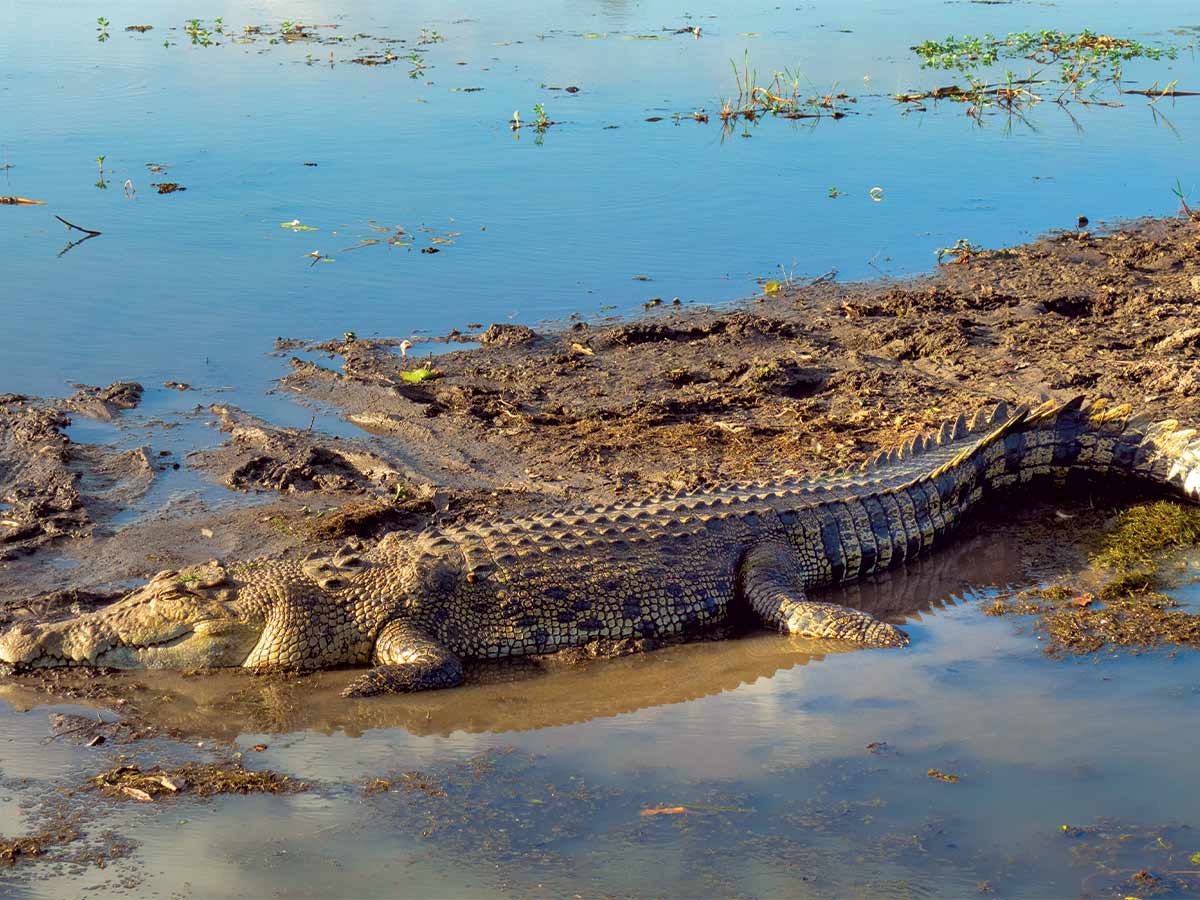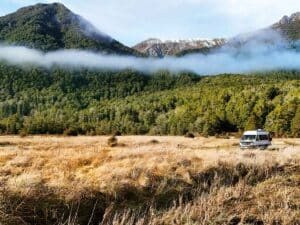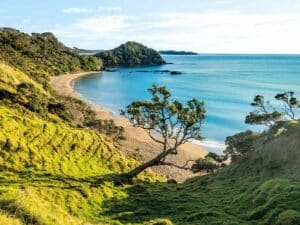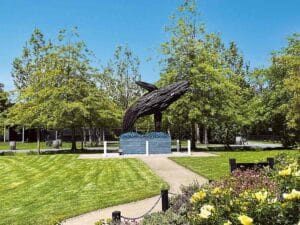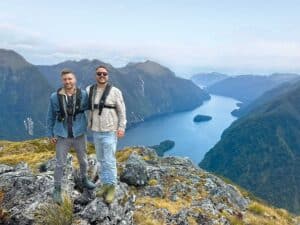Winter is a popular time for Kiwis to pop across to our closest neighbours and experience the warmer climate of Australia. Paul Owen discovers that Kakadu National Park in the Northern Territory is the place to discover Australia’s wildlife as the first humans viewed it 65,000 years ago.
It’s also populated by thousands of the deadliest predators known to man and is where I had several close encounters of the crocodilian kind.
Before that, however, is the journey. Taking the two-hour Yellow Waters Sunset Cruise through the wetlands of Kakadu National Park has to be one of the greatest engagements that a traveller can have with Australia’s wildlife.
For here is an ecosystem that ebbs and flows with the seasons, creating a strong reliable food chain that attracts abundant wildlife, the wet season turning the place almost into a lake before the waters recede back into river channels and tributaries again. Sitting at the top of that food chain is the saltwater crocodile, a predator that’s profoundly adapted to the ever-changing conditions of Kakadu.
The survival strategies of Crocodylus porosus (saltwater crocodile) have enabled it to last 25 million years as a living species on this planet and are highly developed. They have salt glands that enable them to swap seamlessly from seawater to freshwater, can slow their metabolism to last weeks without a meal, and when the dry season hits Kakadu, they can bury themselves in the mud of a dried-up billabong for months to await the return of the rain again.
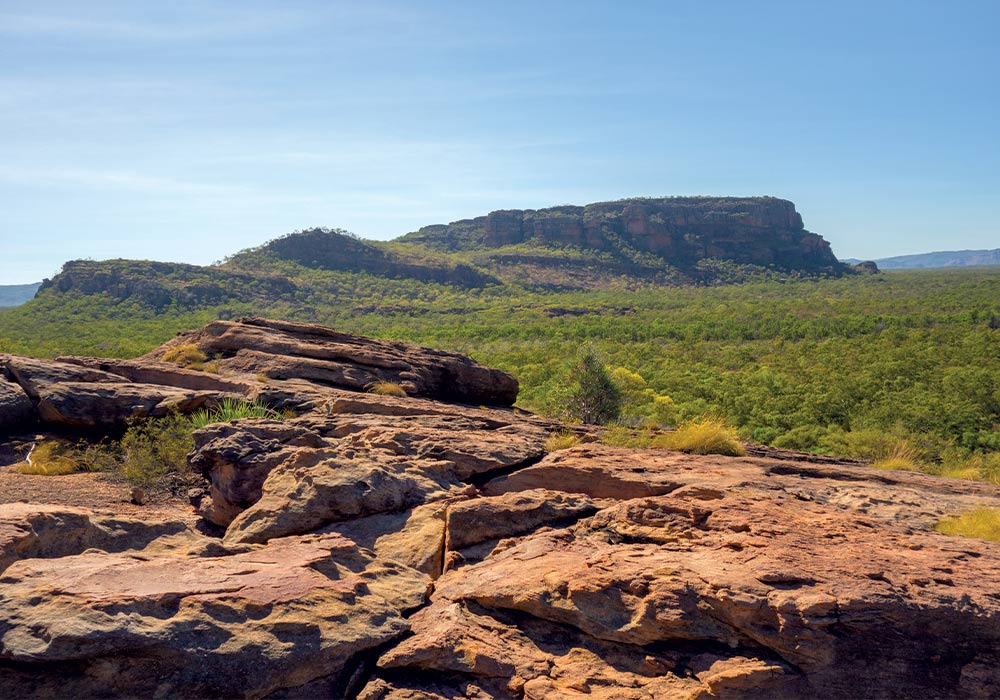
They’re generally quite lethargic throughout most of the day but can really get a wriggle on if there’s a sniff of an easy meal. No human can outswim a crocodile, as the latter can generate speeds of up to 35km/hr underwater. Many of these beasts may be more than 100 years old and weigh 500kg and a few may even be 200 years old and weigh more than a tonne, but they can sprint at speeds of 20+km/hr for short periods.
The diet of a saltwater crocodile is highly varied and includes everything from tiny molluscs to any large water buffalo that leaves the safety of Kakadu’s grasslands to slake their thirst in a nearby creek. Humans sometimes alarmingly find themselves on a croc’s menu as well. It’s estimated that around 100 people die worldwide during crocodile encounters each year.
Not that there’s any imminent danger to be felt when enjoying a slow glide down Jim Jim Creek, the Yellow Water Cruise boat putting its way peacefully past many active crocodiles that are either engaged in territorial manoeuvres or contesting ownership of any rotting water buffalo carcasses located beneath the surface.
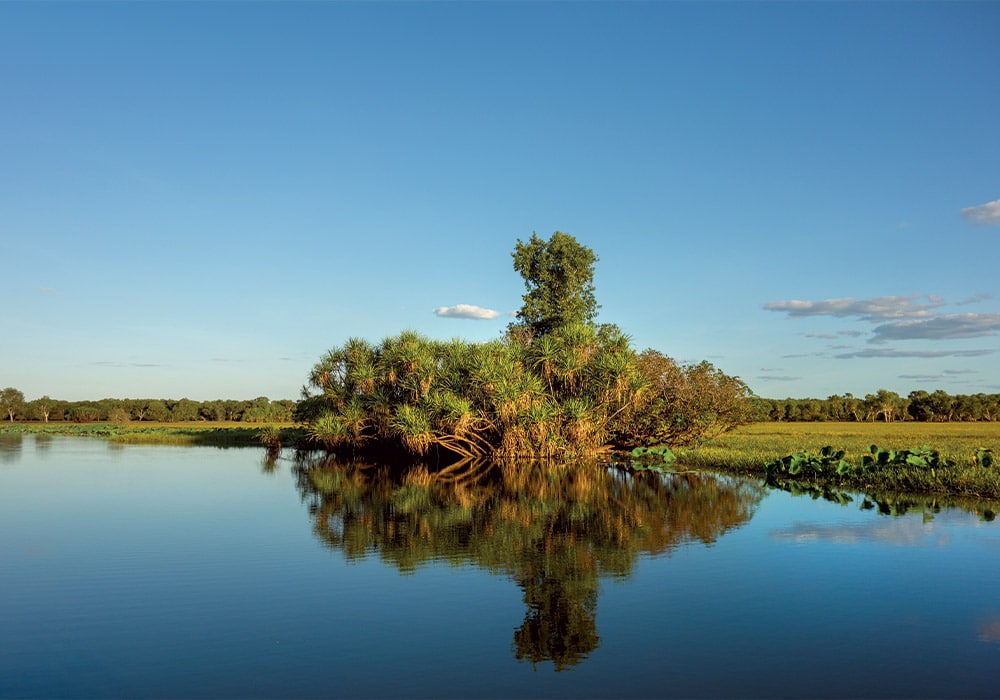
There are several majestic white-bellied sea eagles perched in the trees above the creek, birds that are often seen as spiritual guardians by the Bininj/Mungguy people who are the traditional owners of the park. Below them are more than 60 species of wading birds creating a strangely calming cacophony of sound as the sun descends and the waters mirror the colours of the sky, the whistling ducks and the magpie geese being the most populous. This place, at this time of day, is Australia’s Garden of Eden, complete with serpents and huge amphibious beasts that happen to possess the strongest bites of any living animal.
Yet, this zoologically magical place would no longer be in such a pristine state were it not for the wisdom of one man.
The saving of Kakadu
This old man
had knowledge on all culture,
the boundaries of clan estates,
ceremonial business, everything…
He made it possible for us
to get our land back
Murumburr clan member, Mick Alderston, remembers Nipper Kapirigi (1910–1987)
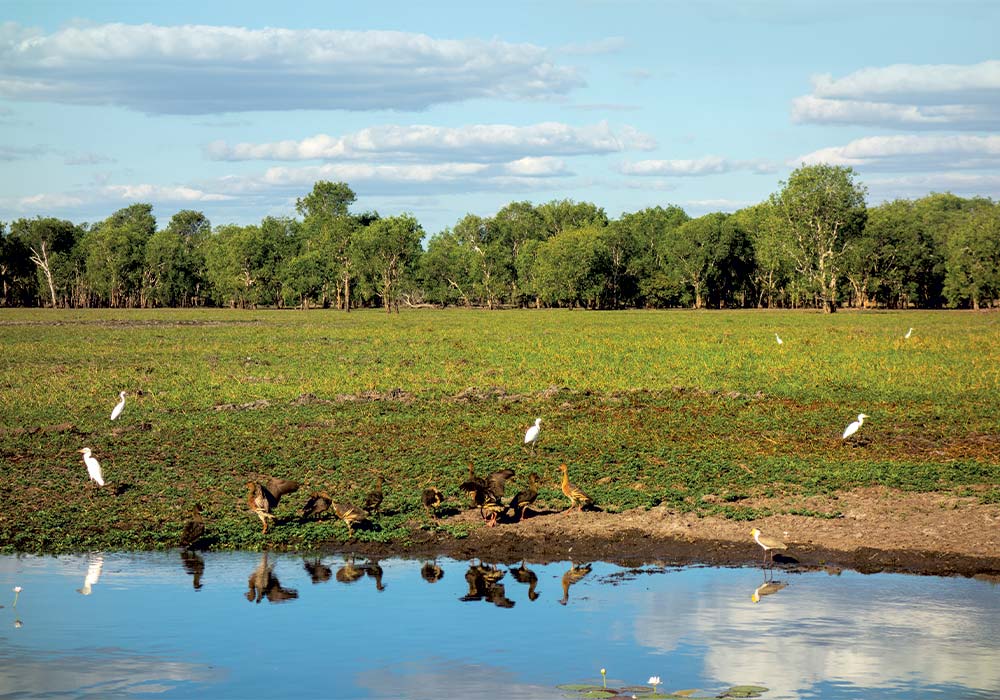
When you pay a meagre sum for your permit to enter Kakadu, it gives you access to free guided tours of several areas, and the guide showing me around the mesmerising art of Nourlangie Rock happened to be Jimmy Madjandi, a Murumburr elder who was active in protecting Kakadu from the intrusion of uranium mining in the 1970s. Just the one mine, Ranger, was allowed near main Kakadu settlement of Jabiru and it’s since turned into a toxic pit that now requires more than $A2.2 billion to rehabilitate. That huge hole in the ground could have been the fate of much more of Kakadu, says Jimmy, were it not for the efforts of Nipper.
“He got the support of all the 19 clans of this area to represent them at a meeting with Rio Tinto, overseen by the Prime Minister, Bob Hawke. “Hawke told the Rio Tinto managers that if they wanted access to the uranium that they had to persuade Nipper to sell the land to them first, so they immediately wrote him out a cheque for five billion dollars.
“He tore it up right in front of them – it was the end of any more uranium mining in the park at the time.”
The clans then leased the land in question to the Australian government so that the Kakadu National Park, first created in 1969, could be substantially extended. Meanwhile, Rio Tinto haven’t given up on their plans to mine the rich Jabiluka deposits of uranium beneath Kakadu, and recently commissioned an independent report that proposed mining at Jabiluka despite giving an assurance to the clans back in 2001 that no mining would be undertaken there without their permission. Seems Nipper’s battle continues, with a new generation of clans-people fighting to protect their traditional land. For Kakadu is the place on Earth that humans have inhabited the longest, as proven by the discovery of an ancient set of stone tools found near Ubirr that carbon-dating showed were made 65,000 years ago.
Barra on the menu
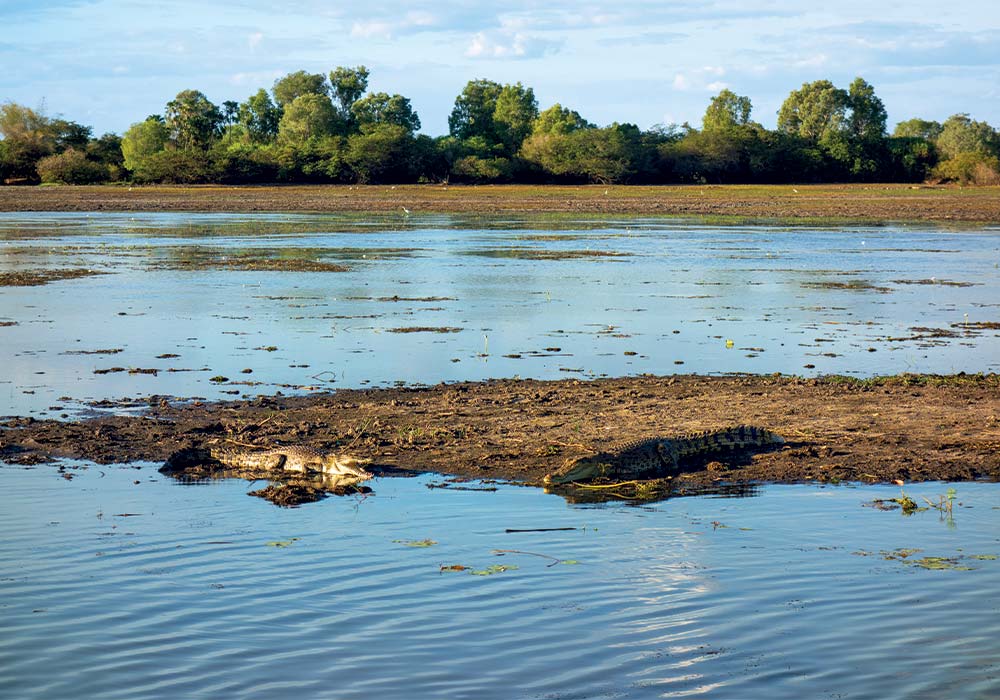
As we wander around Nourlangie Rock, Jimmy is a mine of information and not just about the rock art and the depiction of creation deities such as Namarrkon, the Lightning Man whose flashing axes split rocks, and Bula, the Earth-shaking Rainbow Serpent that lives underground and is sensitive to any disruption of the Kakadu landscape. He recently hosted a group of scientists with special cameras at the site. Their equipment showed not just the art that’s on display today, but the layers of similar artwork beneath it that originate from several thousands of years ago.
That was one of Jimmy’s best days as a Kakadu guide. His worst occurred in October 2002 when he and other rangers had to subdue a large saltwater crocodile that had attacked and killed 23-year-old German tourist, Isabel von Jordan, in nearby Sandy Billabong so that her body could be recovered.
“None of us showed up for work the next day – we all went to pub instead in the hope of forgetting what had just happened.”
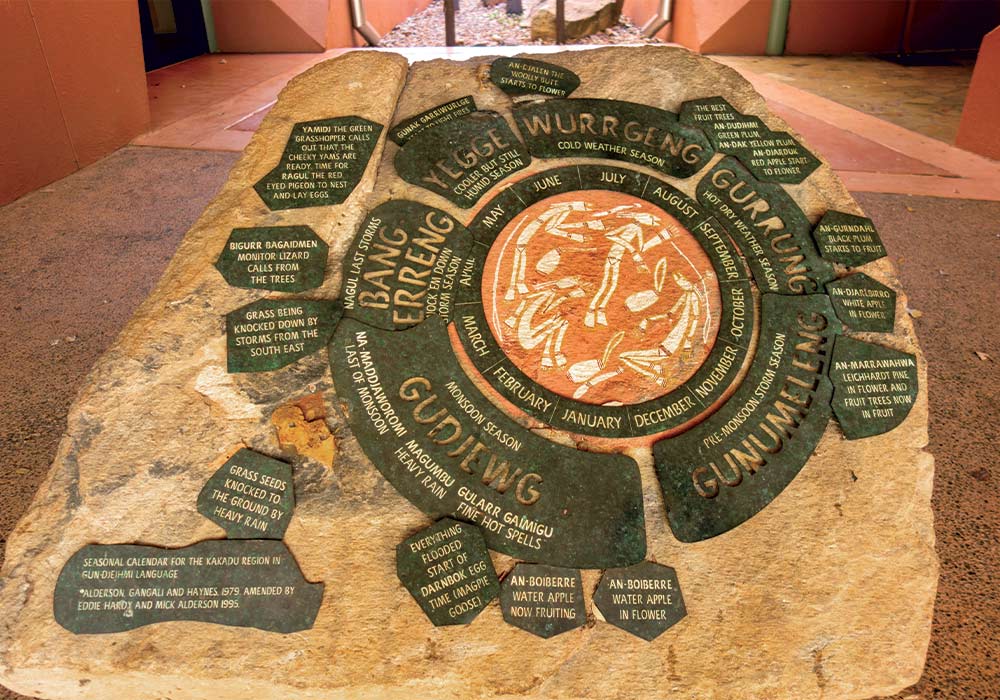
It was the last fatal crocodilian encounter in Kakadu, and the memory of it was still painful to Jimmy 20 years on. He brightens up markedly when I ask him which of the six seasons of the calendar year recognised by his clan is his favourite.
“It’s any time the barramundi are running, which is usually November to mid-May – the wet season.”
No doubt the white-bellied sea eagles and the saltwater crocodiles are just as happy when the barra are racing up the rivers to spawn, for both species are entertaining to watch while they’re fishing. The sea eagles swoop in low over the waterways and often latch on to one of the large fish while it’s in mid-jump in a fine aerial display. The crocs like to form a mostly orderly queue at Cahills Crossing, a ford that connects Arnhem Land to Kakadu with its crossing of the ineptly named East Alligator River. During high tides in spawning season, the barramundi have to make spectacular leaps over the ford, and often their landing is into the open mouth of a waiting crocodile.
For Jimmy, the best way to cook barramundi is to wrap the freshly caught fish whole in the easy-to-remove sheets of the bark of the paperbark tree, with sprigs of native saltbush, and place it in
the dying coals of a fire for 15 minutes on each side. It’s a recipe that has sustained his people for 65,000 years and an epicurean highlight of living fully emersed within the diverse ecosystem of Kakadu National Park.

